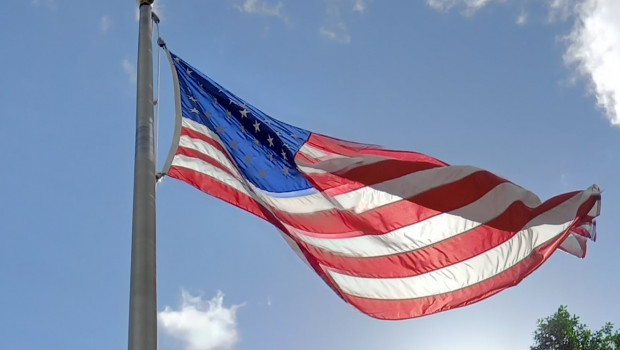US non-farm payrolls increase by 311,000 in February

The pace of hiring in the US during the month of February came in ahead of market expectations with solid growth in both the private and public sectors.
According to the US Department of Labor, non-farm payrolls grew by 311,000.
Consensus was for a rise of 225,000.
Payroll growth for the preceding two months was revised down by a combined 34,000.
Average hourly earnings on the other hand rose by 0.24% month-on-month (consensus: 0.3%), while the length of the average work week ticked lower by a tenth of an hour to 34.5.
Hiring was strongest in the leisure and hospitality sector, increasing by 105,000, with some market commentary noting that wages in that part of the economy were usually low, although the positions were now starting to be filled.
In manufacturing on the other hand, payrolls fell by 4,000.
Private sector payrolls rose by 265,000 and by 46,000 in government.
The rate of unemployment, which is derived from a separate survey than the one which generates the non-farm payroll figures, also came in softer than expected.
It rose by two tenths of a percentage point versus the month before to 3.6%.
And the labor force participation rate ticked higher by one tenth of a percentage point to 62.5%.
Whereas the civilian labour force expanded by 419,000 last month, there were only 177,000 more people employed, hence the rise in the unemployment rate.
Paul Ashworth, chief North America economist at Capital Economics, judged that February's non-farm payrolls print confirmed that January's blow-out gain of 504,000 was not just a seasonal distortion - although the remainder of the report would give some comfort to the Fed.
"The upshot is that it looks like the 25bp/50bp debate surrounding the rate hike decision later this month will come down to February’s CPI report, due next Tuesday," he said.
"We still think the Fed will stick with a 25bp increase, but acknowledge that, after Powell’s hawkish testimony this week, it’s a very close call."
In the background, as of 1413 GMT Fed funds futures had pared the implied odds of a 50 basis point interest rate hike at the 21-22 Fed meeting to 47.6%.
For his part, Ian Shepherdson, chief economist at Pantheon Macroeconomics, said the key number in Friday's report was the downwards revision to January's leap in aggregate hours worked from a preliminary estimate of 1.2% month-on-month to 0.9%, while in February they dipped by 0.1%.
He also noted how the three-month-on-three-month annualised rate of increase in wages slowed from 4.6% to 4.3% - a 21-month low.
Shepherdson was also expecting the activity and inflation data due out during the following week to be more bond market friendly than January's data.
"The first hike was only a year ago; the idea that policymakers now can say definitively that that they have not done enough is very odd, given that wage growth - which is what really matters in the employment report - is headed to a sustainable pace. It might already be there."
There were however some economists who believed that the Fed should hike rates by 50bp at its next meeting, but that they would instead do so by 25bp.
-- More to follow --